Day: 35 Km travelled: 106.27km Steps: 19,618 (current record!) Location: Edinburgh
October 14th, 2017
Edinburgh has been the capital of Scotland since the 15th century. It is located on the Firth of Forth’s southern shore (I just included this fact because I like the name ‘Firth of Forth’…. say that 3 times fast!). It is the seat of the monarchy in Scotland and home to national institutes such as the Scottish National Gallery & National Museum of Scotland. Other notable establishments in the city are Edinburgh Castle, The Palace of Holyrood, Greyfriars and the Old Town, to name but just a few.
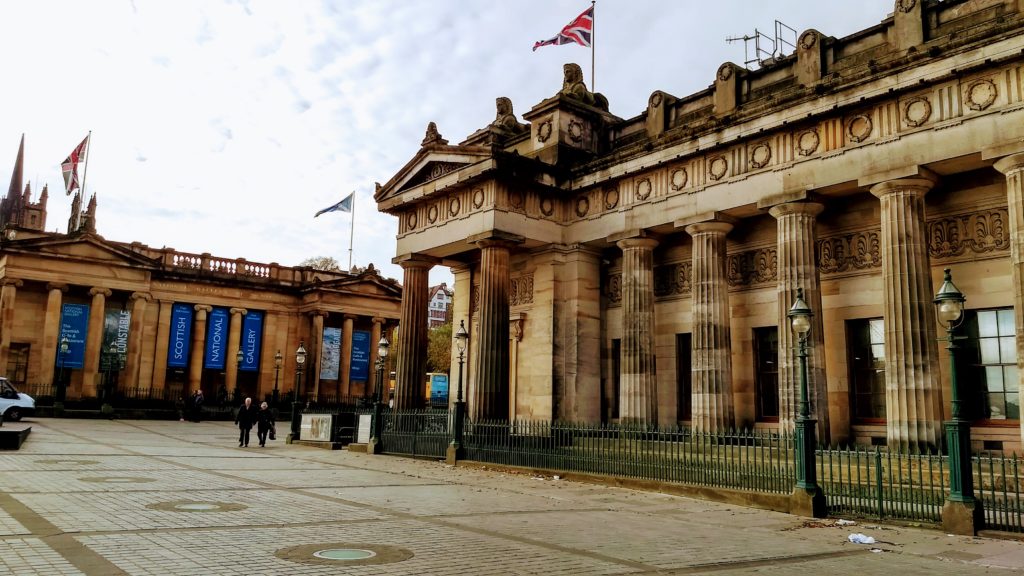 National Gallery of Scotland
National Gallery of Scotland
There is archeological evidence of human settlement in Edinburgh dating back to 8500BC!!! (think about that for a second). The Romans also established themselves here. At one point in the 18th century, the city was described as one of Europe’s most densely populated, overcrowded and unsanitary towns. Luckily, the situation has vastly improved.
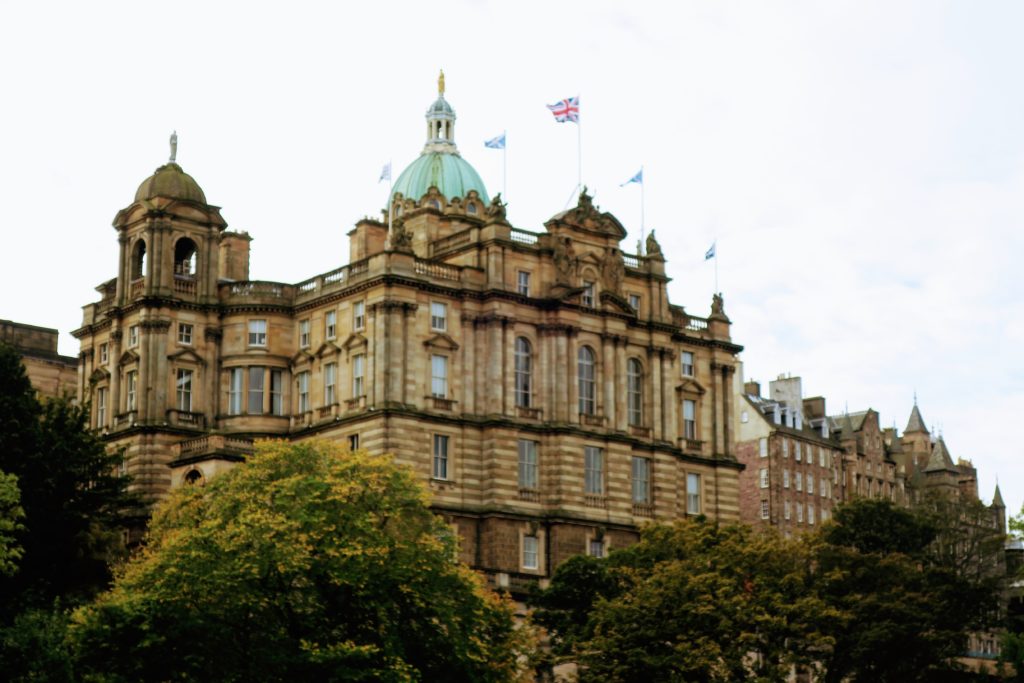
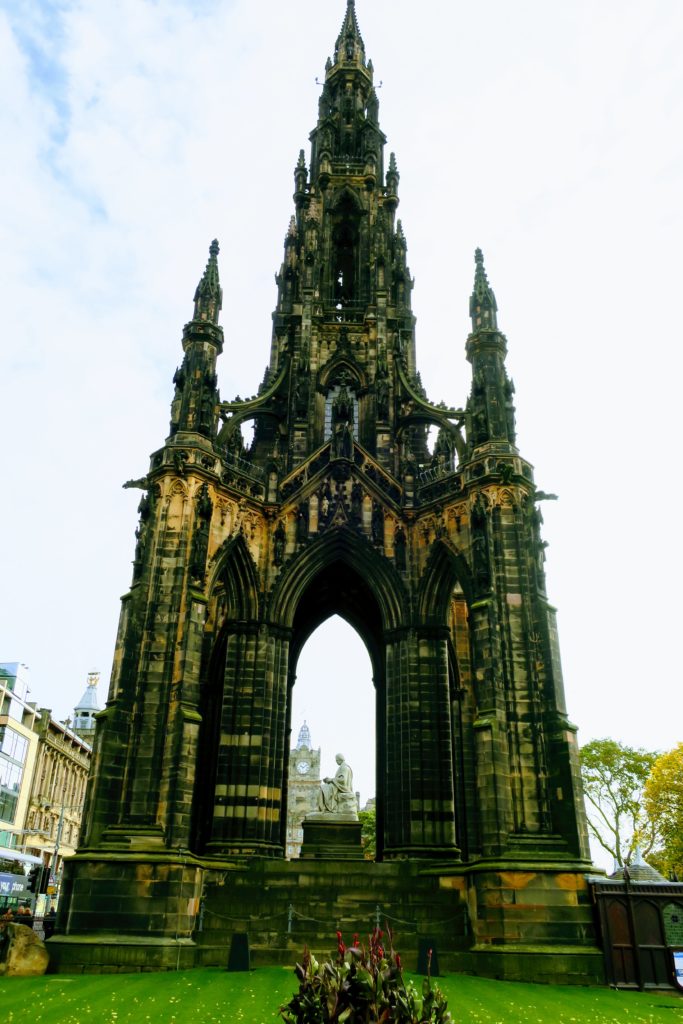 The Capital city is also the home of the world’s largest monument to a writer. By now, you might be able to guess who was worthy of such an honour: Scotland’s favourite son, Sir Walter Scott.
The Capital city is also the home of the world’s largest monument to a writer. By now, you might be able to guess who was worthy of such an honour: Scotland’s favourite son, Sir Walter Scott.
The Scott Monument is a Victorian Gothic monument which was erected near Waverley Mall, Waverley Station, Waverley Bridge & Waverley Steps, which were so named as a nod to Scott (his first novel was titled ‘Waverley’).
It stands 200 feet high and carries 64 figures of characters from Scott’s novels.
There are viewing platforms at varying level inside, for those ready to take on the 288 steps required to reach them.
Even if you’re not intimately familiar with Sir Walter Scott’s work, you’ve likely heard some of his lines before, such as this famous one
Oh what a tangled web we weave, when first we practice to deceive!
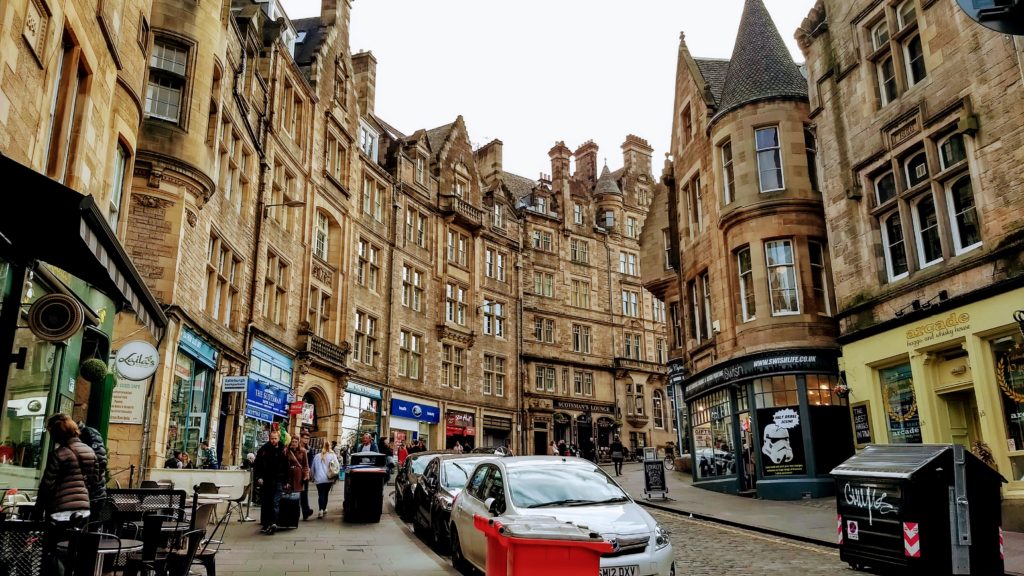 New Town
New Town
Edinburgh has two main neighbourhood which attracts visitors: The Old Town & New Town. Together, they are listed as a UNESCO World Heritage Site. The medieval street plan has been preserved as with many historic buildings. In contrast, the New Town was constructed in the 18th century and is of era-typical Georgian architecture.
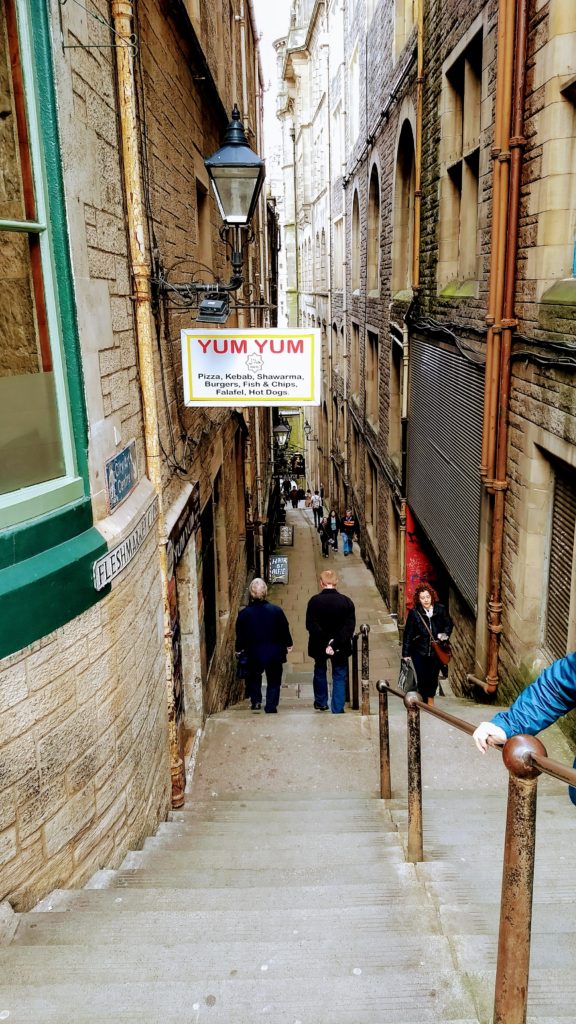
Medieval streets were often narrow alleyways, at times no more than a few feet wide. The Old Town was also the location of some of the world’s earliest “high-rise” buildings. Due to the space restriction in the Old Town, multi-story dwellings were the norm from the 1500s onwards.
One of the most famous streets in Edinburgh and certainly one of the most historical is ‘The Royal Mile ‘. It is considered the historic heart of Edinburgh, an area where culture and history come together. A ‘Scots Mile’ long (5,952 feet), it connects two royal residences at either end (Holyrood House & Edinburgh Castle).
Walking down the mile, you would never know that you were walking on the site of an extinct volcano and the slope created from the retreating ice over 325 million years ago!


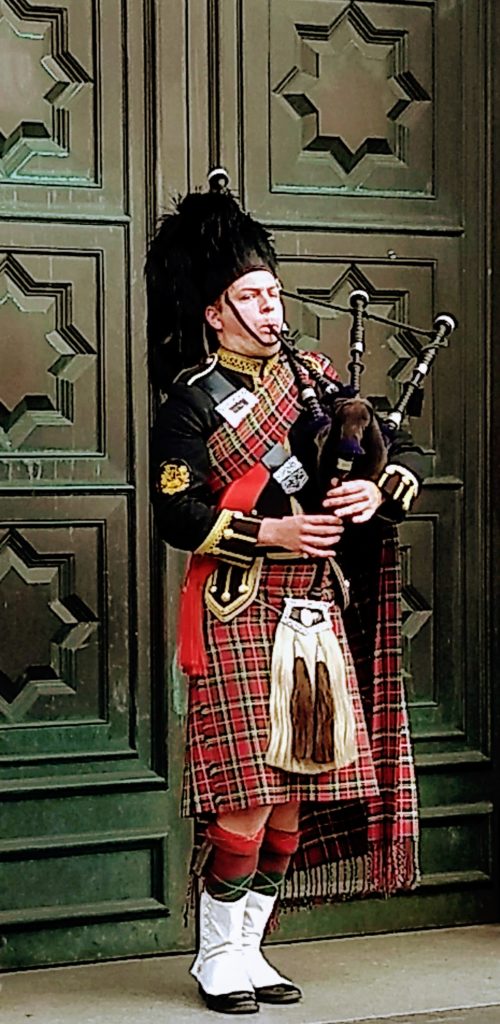
During the week of my visit, an anonymous prankster had cheekily placed a traffic cone atop the Adam Smith statue on the Royal Mile. Perhaps trying to demonstrate that Edinburgh sense of humour can rival that of the Glaswegian…
There’s an interesting article that was written about it, including some humorous tweets from the locals on the subject. You can read it here.
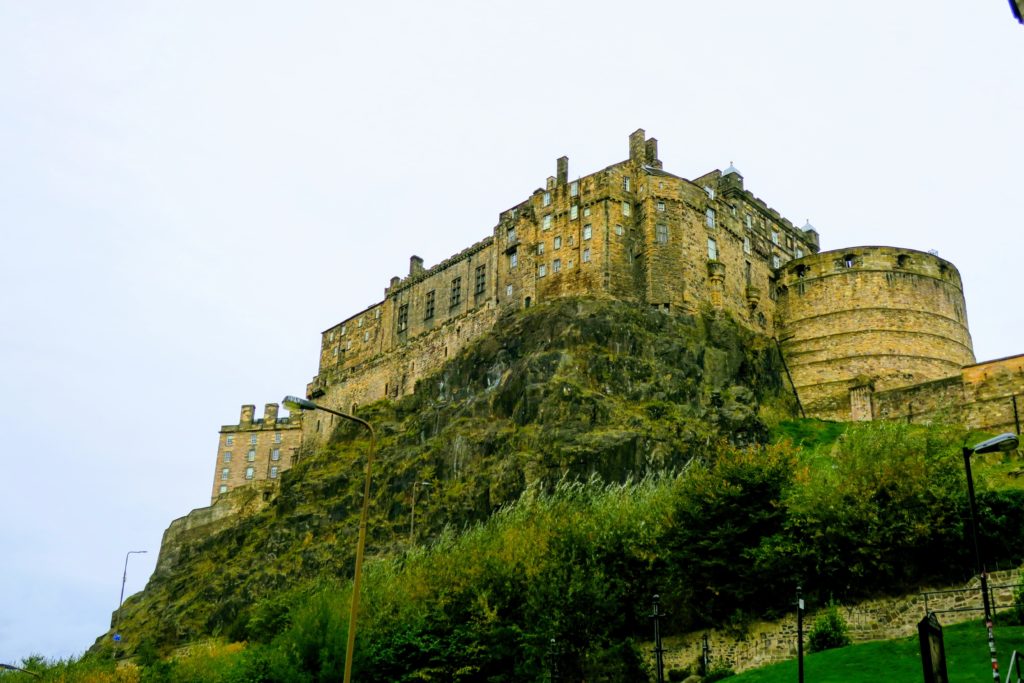
Sitting atop Castle Rock is the historic fortress, Edinburgh Castle. Essentially, in one form or another, humans have occupied the rock since the Iron Age (2nd century AD). Now that’s a lot of history! It is no surprise then, that Edinburgh Castle can claim to be ‘the most besieged place in Great and one of the most attacked in the world’, clocking in at a staggering 26 sieges in its 1100-year-old history. Its simply mind-boggling that this structure is still standing after all that!
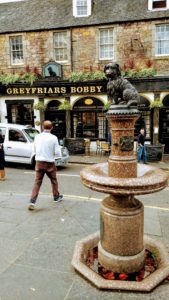
 On the southern edge of the Old Town, Greyfriars Kirkyard can be found (remember our previous vocabulary lesson: a kirk is a church, therefore a kirkyard is a _______). While old cemeteries are often tourist attractions across the world, most visitors come to Greyfriars for one specific reason: Bobby. No, Bobby wasn’t a prominent politician, nor was he an author or some other noted historical figure. Bobby was a dog. When Bobby’s master died, he was buried in the kirkyard and Bobby spent 14 years guarding the grave, until his death in 1872. Now he too has his own gravesite,,on an unconsecrated patch of the Kirkyard. Dogs now commonly leave twigs below the headstone.
On the southern edge of the Old Town, Greyfriars Kirkyard can be found (remember our previous vocabulary lesson: a kirk is a church, therefore a kirkyard is a _______). While old cemeteries are often tourist attractions across the world, most visitors come to Greyfriars for one specific reason: Bobby. No, Bobby wasn’t a prominent politician, nor was he an author or some other noted historical figure. Bobby was a dog. When Bobby’s master died, he was buried in the kirkyard and Bobby spent 14 years guarding the grave, until his death in 1872. Now he too has his own gravesite,,on an unconsecrated patch of the Kirkyard. Dogs now commonly leave twigs below the headstone.
In traditional Julie-travel-style, I ended the day with a sweet treat:
Honeycomb gelato!
BLASTA!


Chanceuse….Toujours plaisant de te lire….Pierre